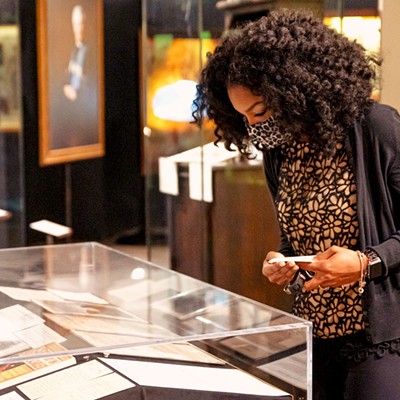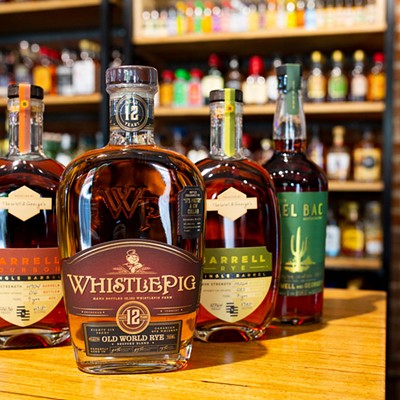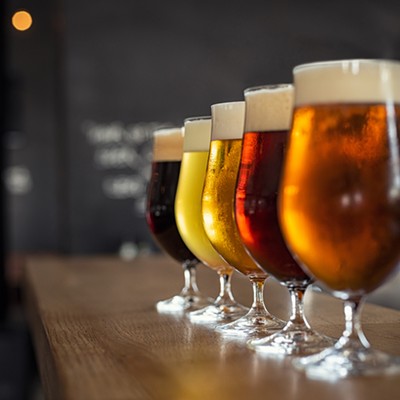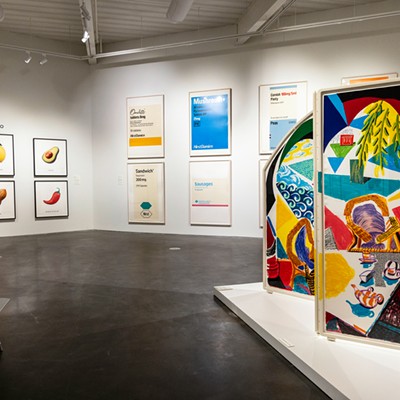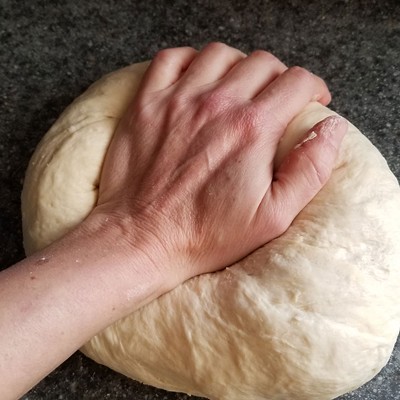It was tiki night at the Martin household, and the adults would be sampling five different rum punches, with the kids testing out their nonalcoholic equivalents.
Tiki culture is a nod to Polynesian and South Pacific food, art and architecture that flourished post- World War II as vets returned home from the Pacific theater, bringing a taste for the islands with them. Hawaiian statehood helped sustain the nation’s fascination with the tropics, and elaborate rum punches became the backbone of tiki bars popping up around the country. The trend went the way of leisure suits but, like these things tend to do, is poised for a tropical comeback.
Fast-forward to the present, Hawaiian Don’s, 3837 N.W. 10th, is synonymous with island-inspired, super-sized, punch bowl cocktails packed with garnishes and bearing names like the Blue Hawaiian and the Scary Canary. Owner Don Cornett first opened the bar 11 years ago.
“We put on a lot of fruit, a lot of cherries, a lot of oranges and a lot of limes,” Cornett said of his cocktail fare. “These are not as strong as a martini, which is pure alcohol, whereas ours have pineapple juice, orange juice, grapefruit drink. It’s not a hardcore drink.”
Tiki drinks traditionally bury the alcohol under an ocean of fruits and juices. For the drinker seeking something simpler, but still tropical, Cafe do Brasil’s Caipirinha is a sweet concoction that could easily be seen in the hands of beachcombers beating back the summer sun.
“It is a very popular drink in Brazil and is very refreshing,” said Marcus Martins, manager at the Midtown restaurant, 440 N.W. 11th. “We slice the lime into tiny wedges, we muddle it with sugar and add cachaça, a Brazilian rum made from pure cane sugar. We add ice, shake and garnish it with a lime wheel.”
For
those wanting a taste of the tropics at home, tiki cocktail recipes can
easily be found online or in bartending guides. Research for this story
used recipes pulled from retroplanet.com: Planter’s Punch, Pain Killer,
Coconut Punch, Zombie and the Tahitian Tattoo.
First
step was to get the coconuts open. Machetes, used for cutting through
undergrowth and felling sugar cane, are the traditional tools of choice,
which is awesome … but decidedly harder to find in the average kitchen.
Absent a machete, a large butcher’s knife works well enough. Simply lop
off the pointed top of the coconut and then chip away a hole wide
enough to drain the juice and scoop out the flesh. The juice and flesh
can then be blended to make coconut milk, which has a light and savory
taste. Canned coconut milk can be substituted, but the texture isn’t as
interesting.
Although
we selected five cocktails, each with a long ingredient list, there was
a lot of overlap. Light and dark rum, orange juice, pineapple juice and
coconut milk are tiki mainstays. Add a few bartending staples, such as
sweet and sour mix, grenadine and Triple Sec, and you should be good to
go. We replaced the Triple Sec with Grand Marnier because it made us
feel fancy.
The
lone misfire was the Coconut Punch, which was made with coconut milk,
light rum, sugar and lime juice, and ended up a little too sour. The
handsdown winner in both the alcoholic and nonalcoholic categories was
the Tahitian Tattoo. It was also the only drink we tried that required a
blender.
The
Tahitian Tattoo is made with a shot of spiced rum, a shot of light rum, 2
ounces of pineapple juice, a can of apricots, coconut milk and a peeled
banana, which acted as a buffer to keep the acidic pineapple juice from
dominating the drink.
A
drawback to these sweet, easy-to-drink cocktails is that the alcohol is
so hidden that it can sneak up on you, leaving you suddenly three
sheets to the wind with plenty of drink remaining.

